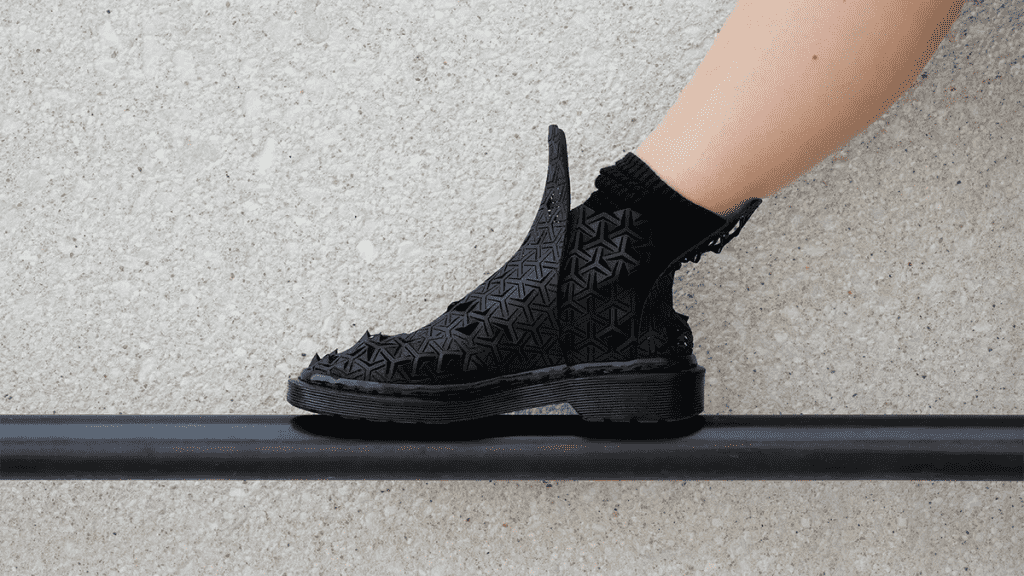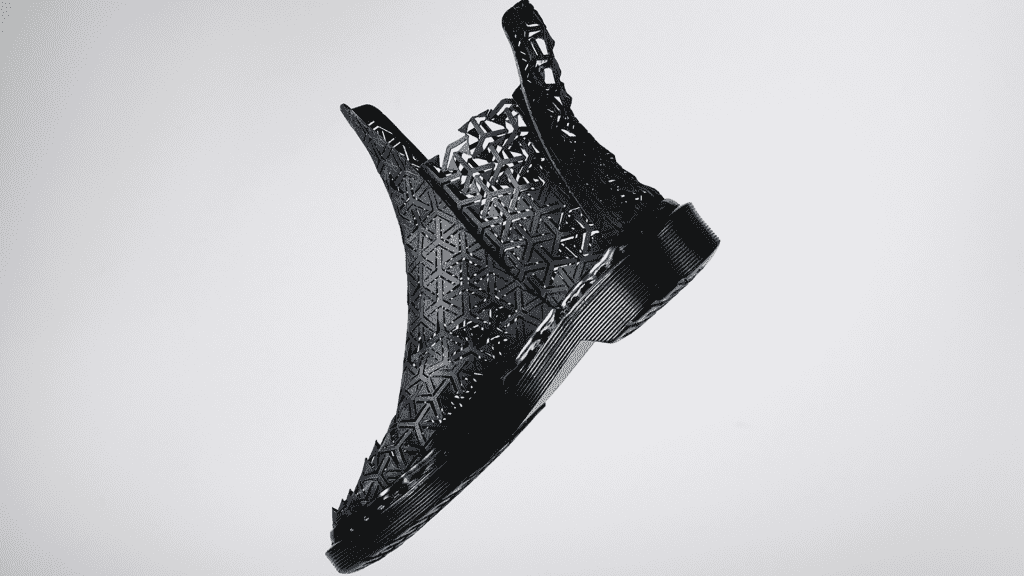German company WertelOberfell has created 3D-printed shoes that adapt to your feet.
The shoes were designed on a desktop FDM 3D printer and TPU. They are called Auxetic Wear. These shoes depend on an auxetic structure, which allows the shoe to adapt to the wearer’s foot. The shoes expand or compress according to the stress exerted.
The designers, Gernot Oberfell and Jan Wertel made sure to instill maximum comfort in the shoes. They used additive manufacturing, which brought more flexibility.

They worked with an auxetic structure – a structure made with auxetic materials, which have a negative Poisson’s ratio, which means that they thicken when stretched while other materials tend to become thinner.
On the company’s website, Auxetic Wear explains the shoe’s design, “The individual pieces are made with a resistant TPU (shore 98A), the auxetic structure is printed, including its reinforcement. They are glued together and then sewn onto the existing sole, combining traditional craftsmanship with modern technology. The final design has been refined through many iterations.”
The final version of the shoes has several two-dimensional 3D-printed shapes that are sewn onto a traditionally designed sole.
The designers of the shoes studied Industrial Design in Stuttgart at the State Academy of Arts, a school that is based on the principles of the Ulmer Schule and the Bauhaus.
Their work includes furniture, lighting, and industrial products to experimental research pieces for companies such as Braun, Neff, Philips, Panasonic, Sony, Yamagiwa, Bulthaup, MGX by Materialise, Iker, Nowystyl, DuPont Corian, and others.

WertelOberfell’s works have been exhibited in famous art centers such as the Metropolitan Museum of Art in New York, the Cooper Hewitt Smithsonian Design Museum in New York, and the Victoria & Albert Museum in London.
Auxetic materials are materials that have a negative or effectively negative Poisson’s ratio.
Materials are also auxetic if a compressive load applied along the axis results in a reduction in the dimension of the material along an axis perpendicular to the axis along which the compressive load is applied.


